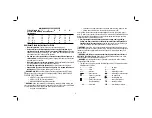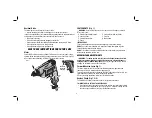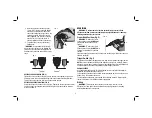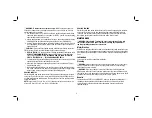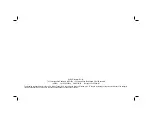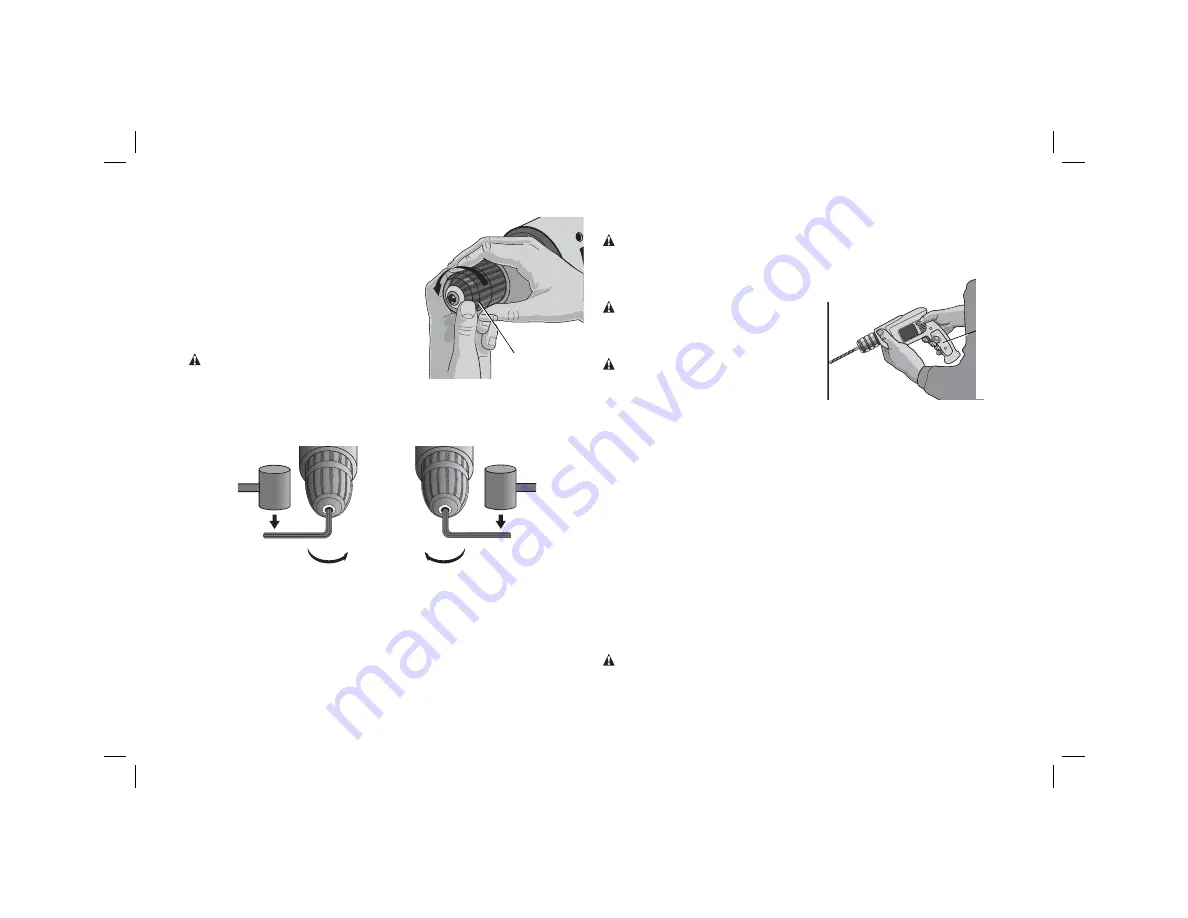
5
2. Insert the bit or other accessory about
D
FIG. 2
19 mm (3/4") into the chuck and tighten
securely by holding the rear half of the
chuck and rotating the front portion in the
clockwise direction. When the chuck is
nearly tightened, you will hear a clicking
sound. After 4–6 clicks, the chuck is
securely tightened around the accessory.
3. To release the accessory, repeat step 1
listed above.
WARNING:
Do not attempt to tighten drill
bits (or any other accessory) by gripping the
front part of the chuck and turning the tool on.
Damage to the chuck and personal injury may
result.
FIG. 3
FIG. 4
KEYLESS CHUCK REMOVAL (FIG. 3)
Tighten the chuck around the shorter end of a hex key (not supplied). Using a soft
hammer or piece of wood, strike the longer end in the counterclockwise direction.
This will loosen the chuck so that it can be unscrewed by hand.
KEYLESS CHUCK INSTALLATION (FIG. 4)
Screw the chuck on by hand as far as it will go. Tighten the chuck around the shorter
end of a hex key (not supplied) and strike the longer end in the clockwise direction
with a soft hammer.
OPERATION
WARNING: To reduce the risk of serious personal injury, turn tool off and
disconnect tool from power source before making any adjustments or removing/
installing attachments or accessories.
Proper Hand Position (fig. 5)
G
FIG. 5
WARNING:
To reduce the risk of
serious personal injury,
ALWAYS
use
proper hand position as shown in
figure 5.
WARNING:
To reduce the risk of
serious personal injury,
ALWAYS
hold
securely in anticipation of a sudden
reaction.
Proper hand position requires one hand under the the housing, with the other hand on
the main handle (G).
Trigger Switch (fig. 1)
To start the drill, depress the trigger switch; to stop the drill, release the trigger switch.
NOTE:
Use lower speeds for starting holes without a center punch, drilling in metal or
plastics, driving screws or drilling ceramics. Higher speeds are better for drilling wood
and composition boards and using abrasive and polishing accessories.
VARIABLE SPEED
A variable speed trigger switch (A) permits speed control—the farther the trigger is
depressed, the higher the speed of the drill.
For continuous operation, press and hold the variable speed switch, move the lock-on
button (B) up, then release the switch.
To stop continuous operation, press the switch briefly and release it. Always switch
the tool off when work is finished and before unplugging.
Drilling
WARNING:
To reduce the risk of serious personal injury, turn tool off and
disconnect tool from power source before making any adjustments or removing/
installing attachments or accessories.
Summary of Contents for DWDO14S-XE
Page 1: ...DWDO14S XE VARIABLE SPEED REVERSIBLE DRILL INSTRUCTION MANUAL ...
Page 2: ......
Page 10: ...8 ...
Page 11: ...9 ...





